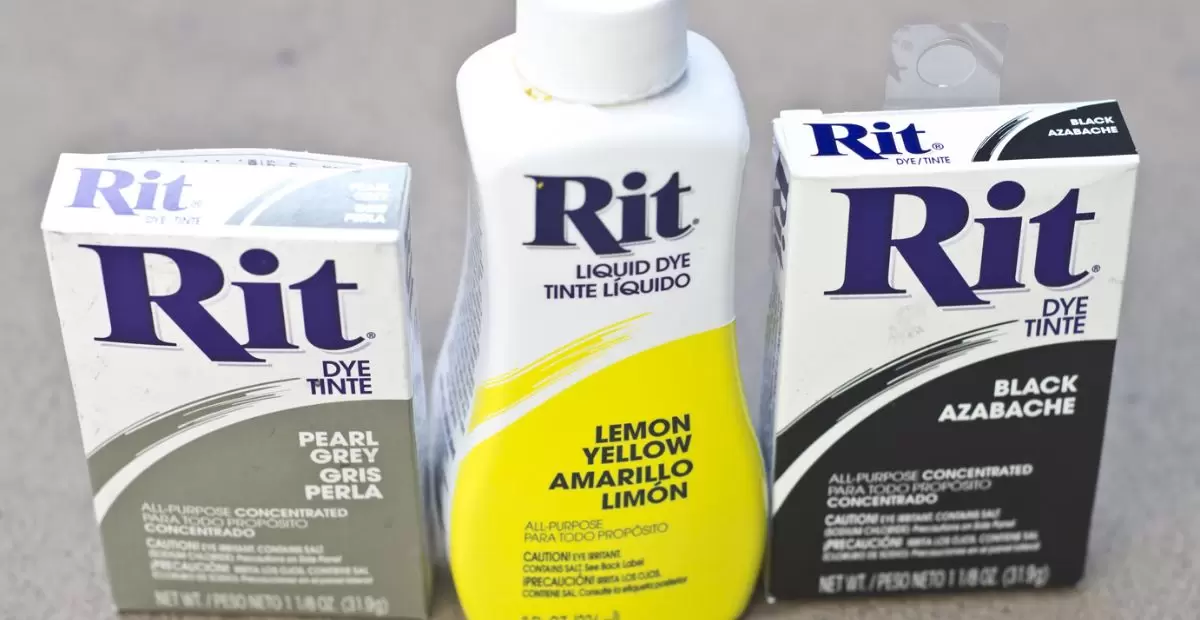Rit Dye is a versatile fabric dye widely known for its ability to infuse vibrant colors into textiles. Comprising a range of color options, Rit Dye is popularly used for revitalizing faded clothing or creating personalized designs on fabrics.
The intriguing question sparks curiosity about the potential impact of Rit Dye on stainless steel surfaces. Will Rit Dye Stain Stainless Steel? As we delve into this query, exploring the compatibility and consequences, we uncover a realm of possibilities and potential applications.
When it comes to the interaction between Rit Dye and stainless steel, caution is advised. Rit Dye is primarily designed for use on fabrics and may not adhere well to stainless steel surfaces. While Rit Dye is known for its effectiveness in coloring textiles, its application on stainless steel may result in uneven staining or limited color absorption.
Properties of Stainless Steel
Stainless steel, known for its durability and corrosion resistance, is a popular metal alloy in various applications. Composed primarily of iron, chromium, nickel, and other elements, stainless steel exhibits remarkable strength and an innate ability to withstand harsh environmental conditions.
Its non-corrosive nature makes it suitable for applications ranging from kitchen appliances to industrial equipment. The chromium content forms a protective oxide layer on the surface, providing stainless steel with its characteristic luster and resistance to staining. Despite its robust properties, stainless steel is not impervious to all forms of discoloration.
Challenges Staining Stainless Steel
Staining stainless steel poses unique challenges due to its inherent resistance to corrosion and staining. The protective oxide layer, while beneficial for most applications, can hinder the absorption of dyes and stains. Achieving even coloration on stainless steel surfaces becomes a delicate task, often requiring specialized treatments or surface modifications.
The presence of contaminants or surface irregularities can impact the staining process, leading to unpredictable outcomes. As a result, when contemplating staining stainless steel, it is essential to recognize these challenges and, if necessary, consult with experts or conduct small-scale tests to determine the feasibility and potential hurdles associated with the intended application.
Effects of Dye Chemical Composition
The chemical composition of dyes plays a pivotal role in their interaction with stainless steel surfaces. Rit Dye, formulated for fabrics, may not seamlessly adhere to the unique composition of stainless steel. The molecular structure of the dye and its affinity for textile fibers may limit its effectiveness on metal surfaces.
When attempting to apply dye to stainless steel, one must consider the reactivity of the dye chemicals with the metal and the potential for uneven color distribution. Incompatibility between the dye and stainless steel may result in a lack of adhesion or adhesion with undesirable effects.
Role of Surface Roughness
Surface roughness plays a pivotal role in determining the effectiveness of various processes, especially in the realm of material bonding. When it comes to adhesion and bonding, a smoother surface often facilitates stronger and more uniform bonds. In the context of materials like steel, the surface roughness can impact how well adhesives or coatings adhere to the substrate.
High surface roughness may provide more sites for bonding, but it can also lead to uneven adhesion. It’s a delicate balance, and understanding the specific requirements of the application is crucial. Industries ranging from automotive to electronics meticulously consider surface roughness to optimize the performance and durability of their products.
Heat Setting Impact on Bonding
Heat setting is a crucial stage in many bonding processes, significantly influencing the final strength and durability of the bonded materials. During heat setting, polymers or adhesives undergo a transformation that cements their connection with the substrate. The application of heat allows the molecules to intermingle and form a more cohesive and stable bond.
The temperature and duration of the heat-setting process are meticulously controlled to ensure the desired outcome. In some cases, heat setting can lead to cross-linking, where polymer chains create a network, enhancing the overall strength of the bond.
Varying Results by Steel Grade

Not all steel is created equal, and the choice of steel grade significantly influences the outcomes of various processes, including bonding. Different steel grades exhibit distinct material properties, such as hardness, ductility, and composition, which can impact their compatibility with adhesives, coatings, or other bonding methods.
Engineers and manufacturers must carefully consider the specific requirements of their applications and select the appropriate steel grade to ensure optimal bonding performance. For example, high-strength steel may require specialized bonding techniques to accommodate its unique characteristics, while stainless steel, with its corrosion resistance, presents its own set of considerations.
Enhancing Adhesion for Better Staining
To achieve optimal staining on steel surfaces, enhancing adhesion is key. Start by ensuring the steel surface is clean and free from any grease, oils, or contaminants. A thorough cleaning with a mild detergent and water can pave the way for better dye absorption. Lightly sanding the steel surface can create a slightly textured finish, promoting better adhesion for the dye.
Caution is advised when using iso propyl alcohol on stainless steel surfaces, as it can potentially damage the protective layer. This may compromise the steel’s resistance to corrosion and staining, diminishing its overall durability and aesthetic appeal. Consider alternative methods or consult with experts to safeguard your stainless steel products.
Most Effective Dye Types for Steel
When it comes to staining steel, certain dye types prove to be more effective in achieving lasting and vibrant results. Acid-based dyes are renowned for their ability to penetrate steel surfaces, creating deep and rich colors. These dyes chemically react with the metal, ensuring a durable and long-lasting stain.
Powdered dyes, when mixed with a suitable solvent, also offer excellent penetration into steel, resulting in vivid and well-absorbed colors. It’s crucial to choose dyes specifically formulated for use on metal surfaces, as they are designed to adhere to steel and provide optimal color saturation.
Best Staining Methods for Steel
Choosing the right staining method is pivotal in achieving the desired results on steel surfaces. Immersion staining involves submerging the steel into a dye solution, ensuring even coverage on all surfaces. Brushing or spraying the dye onto the steel offers more control, allowing for targeted application and detailed designs.
Heat can also play a crucial role, as it helps open the pores of the steel, facilitating better dye absorption. Experimenting with different application techniques and finding the method that suits your project best can significantly impact the outcome. By exploring the best staining methods for steel, you can unlock the full potential of the dye.
Popular Applications and Uses
Rit Dye stands out as a go-to solution for a variety of applications, primarily in the realm of fabric transformation. From breathing new life into faded clothing to adding a personal touch to home décor items, Rit Dye is a versatile tool for creative expression. Crafters and DIY enthusiasts frequently turn to Rit Dye to unleash a spectrum of vibrant colors on fabrics, making it a popular choice for tie-dye projects, customizing garments, and creating unique accessories.
The ease of use and diverse color options make Rit Dye an accessible and enjoyable medium for anyone looking to infuse their personal style into everyday items. Beyond the fashion realm, Rit Dye extends its utility to craft projects, home furnishings, and even seasonal decorations. It’s revamping old linens, rejuvenating throw pillows, or crafting one-of-a-kind gifts, the applications of Rit Dye are limited only by imagination.
Maintaining Stain Durability on Steel
While Rit Dye is celebrated for its prowess in coloring fabrics, its compatibility with stainless steel raises questions about stain durability. It’s essential to approach this combination with caution, as Rit Dye may not exhibit the same adherence and longevity on steel surfaces as it does on fabrics. When contemplating the use of Rit Dye on stainless steel, factors such as surface preparation, application method, and intended use must be considered.
For those intrigued by the potential of Rit Dye on stainless steel, experimentation is key, but it’s advised to start with small, inconspicuous areas. The outcomes may vary, and while Rit Dye can impart color to steel surfaces, achieving a durable and lasting stain may require additional steps, such as sealants or coatings designed for metal applications.
FAQs
Can Rit Dye be used on stainless steel?
Rit Dye is primarily formulated for fabrics and may not adhere well to stainless steel surfaces, resulting in uneven staining.
What happens if Rit Dye is applied to stainless steel?
When applied to stainless steel, Rit Dye may not provide consistent color absorption, leading to unpredictable and potentially undesirable outcomes.
Are there alternative methods for coloring stainless steel?
For coloring stainless steel, it’s advisable to explore specialized stainless steel dyes or finishes designed to adhere to metal surfaces, ensuring a more reliable and satisfactory result.
Conclusion
In the colorful world of Rit Dye and stainless steel, the fusion of these two materials brings about unexpected possibilities. While Rit Dye excels in transforming fabrics, its journey onto stainless steel is marked by caution and exploration. The question, Will Rit Dye Stain Stainless Steel? beckons us to consider the intricate dance between dye and metal, urging us to approach the canvas of stainless steel with an understanding of the unpredictable results that may unfold.
In our exploration, we’ve glimpsed into the realm of creativity and potential challenges when Rit Dye encounters stainless steel. The vibrant hues that Rit Dye imparts to fabrics may not seamlessly translate onto the stainless steel canvas. This venture encourages us to embrace the unexpected, reminding us that even in the world of DIY and color transformation, each material has its unique characteristics.
